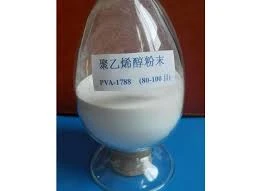Understanding Tile Bond Chemistry A Key to Successful Installation
Tile installation is an art that combines aesthetics and functionality, resulting in beautiful spaces that can withstand the test of time. One crucial aspect that often goes overlooked in this process is the chemistry behind tile bonding. Tile bond chemicals, primarily adhesives and grouts, play an essential role in ensuring that tiles adhere securely to surfaces and maintain their appearance and durability over the years. This article explores the various types of tile bond chemicals, their compositions, and their importance in the tile installation process.
The Fundamentals of Tile Bond Chemicals
Tile bond chemicals are specialized substances designed to secure tiles to various surfaces, including floors, walls, and ceilings. The primary types of tile bond chemicals include adhesives, grouts, and sealants. Each type serves a distinct purpose and is formulated differently to meet specific requirements.
1. Adhesives Tile adhesives, also known as thin-set mortars, are designed to bond tiles to a substrate. They are often made from a combination of cement, sand, and various additives that enhance their performance. The most common types include cement-based adhesives, modified thin-set mortars, and epoxy adhesives. Cement-based adhesives are widely used for their versatility, affordability, and ease of application. Modified mortars incorporate polymers to improve adhesion, flexibility, and water resistance, making them ideal for challenging installations, such as in wet areas like bathrooms and kitchens.
2. Grouts Once tiles are laid, grouting is necessary to fill the joints between them, preventing dirt and moisture penetration. Grouts can be classified into sanded and unsanded varieties. Sanded grout contains fine sand, providing a stronger bond for wider joints (greater than 1/8 inch), while unsanded grout is smoother and used for narrower joints. Recently, polymer-modified grouts have gained popularity due to their improved resilience, stain resistance, and ease of cleaning.
3. Sealants Although not always necessary, sealants protect both the adhesive and grout from moisture and stains. They act as a barrier that prevents water ingress, which can lead to mold growth and degrade the bonding agent’s effectiveness over time. Sealants are particularly important in areas exposed to high humidity or frequent water exposure.
tile bond chemical

Chemical Composition and Performance
The effectiveness of tile bond chemicals lies in their chemical composition. For example, cement-based adhesives undergo a hydration process when mixed with water, leading to hardening and developing a strong bond. Additives like latex or polymers enhance flexibility and adhesion, making them suitable for a variety of substrates, including concrete, wood, and even existing tiles.
Epoxy adhesives, on the other hand, are composed of a resin and a hardener, creating a durable and water-resistant bond. While they are more expensive and require careful mixing, they are sometimes necessary for specialized applications where maximum strength is critical, such as in commercial settings.
Importance of Proper Application
Understanding the chemistry of tile bond materials is essential, but proper application is equally crucial for ensuring a successful installation. Factors such as surface preparation, ambient temperature, and humidity can significantly affect the performance of tile bond chemicals. For instance, surfaces must be clean, dry, and free from contaminants for optimal adhesion. Furthermore, following manufacturer instructions regarding mixing ratios and curing times is vital for achieving the desired results.
Conclusion
The chemistry of tile bond materials is fundamental to achieving a successful tile installation. From adhesives to grouts and sealants, each component plays a specific role in ensuring durability, aesthetic appeal, and functionality. By understanding the chemical properties and proper application techniques of these materials, homeowners and professionals alike can achieve long-lasting and visually stunning tile surfaces that stand the test of time. Investing time in selecting the right tile bond chemicals and applying them correctly will ultimately result in a beautiful and enduring tiled space.
-
Rdp Powder: Key Considerations for Wholesalers in the Building Materials IndustryNewsJul.08,2025
-
Key Considerations for Wholesalers: Navigating the World of Hpmc - Based ProductsNewsJul.08,2025
-
Hpmc Detergent: Key Considerations for WholesalersNewsJul.08,2025
-
Key Considerations for Wholesalers: China Hpmc For Tile Adhesive, Coating Additives, Concrete Additives, and MoreNewsJul.08,2025
-
Crucial Considerations for Wholesalers: Navigating the World of Construction MaterialsNewsJul.08,2025
-
Key Considerations for Wholesalers Sourcing Additive For Cement, Additive For Concrete, Additive For Putty from Additive Manufacturer Shijiazhuang Gaocheng District Yongfeng Cellulose Co., Ltd.NewsJul.08,2025




